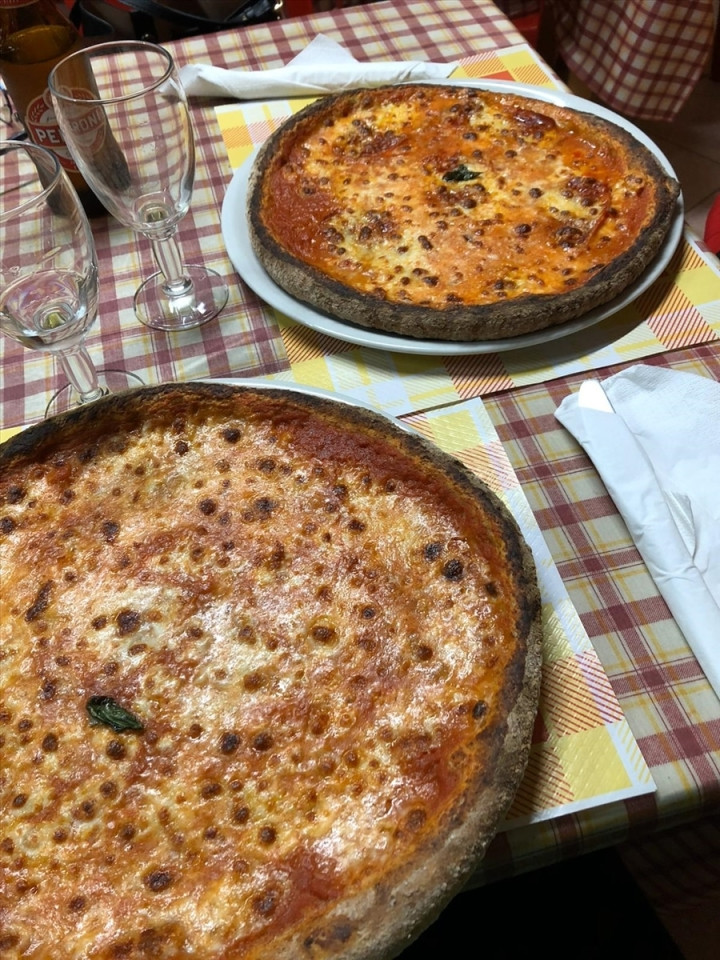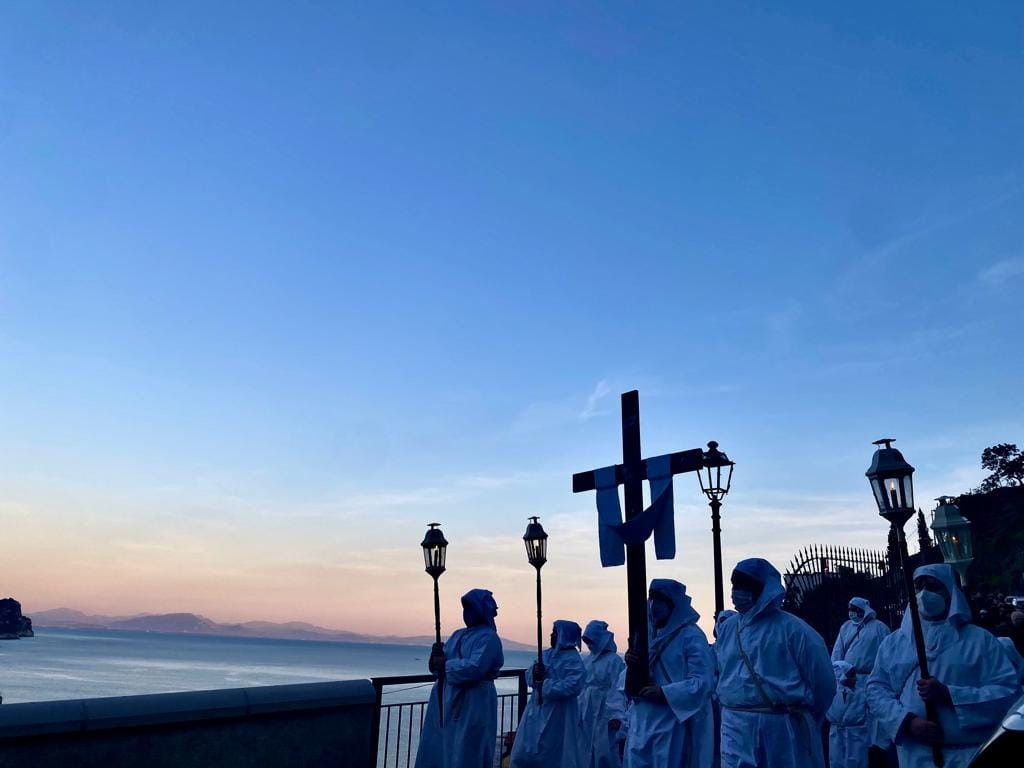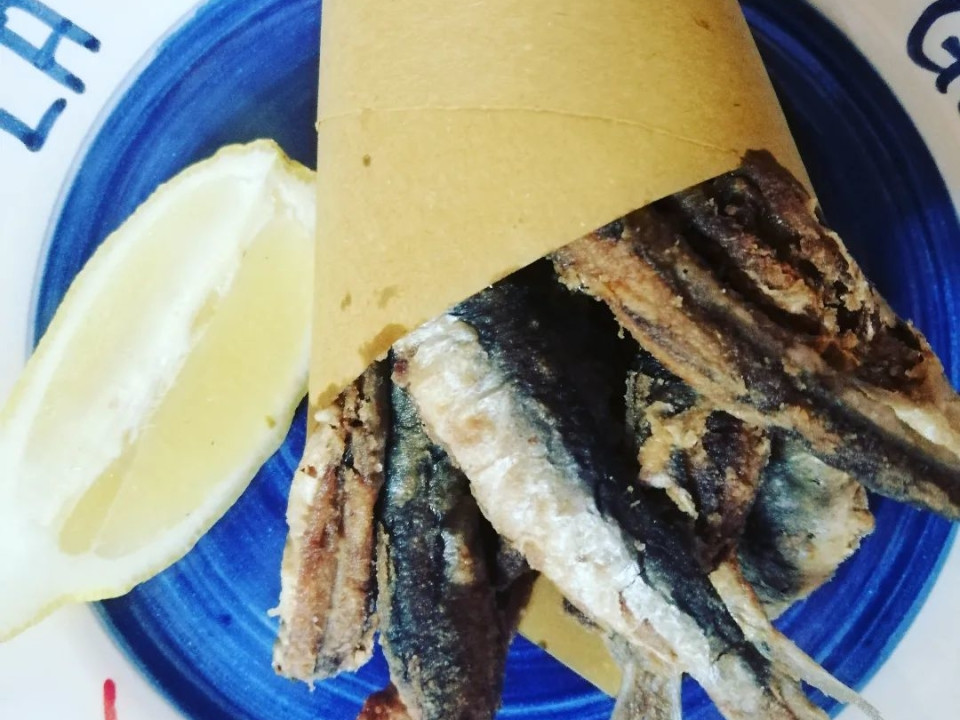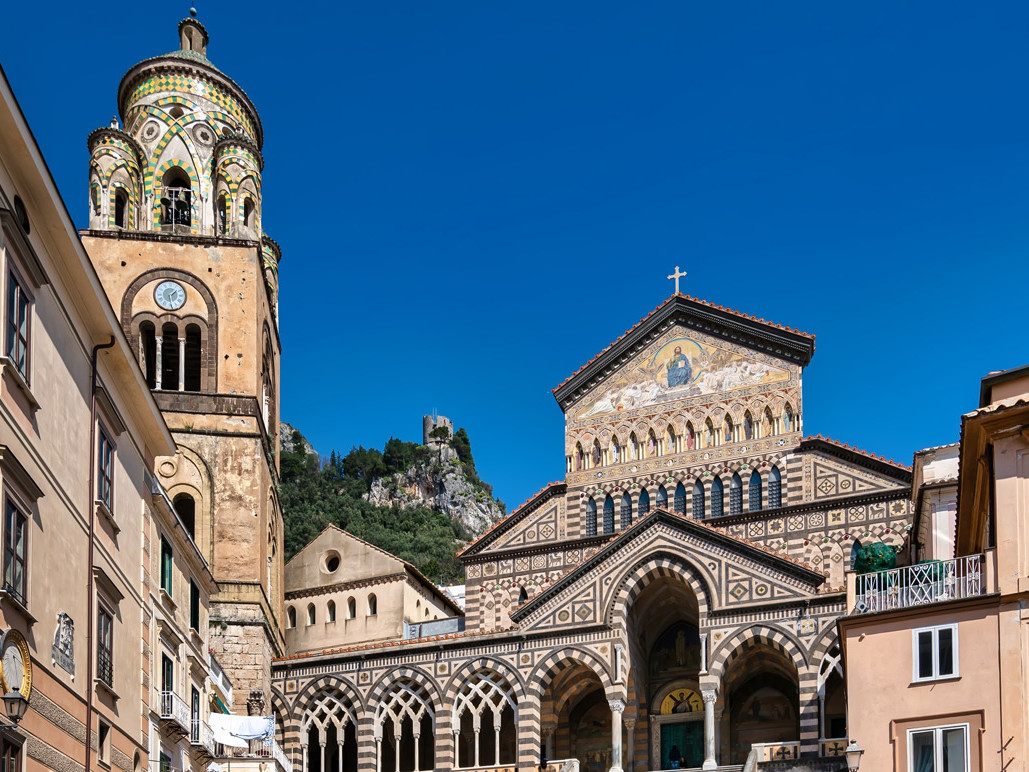TRAMONTI'S "BLACK PIZZA" FOR THE COMMEMORATION OF THE DEAD
November 2 is the day of commemoration of the dead, and on the Amalfi Coast it is celebrated with a traditional dish unknown to most: the black pizza of Tramonti.
by Roberta Cascone
The month of November starts with the commemoration of the dearly departed. This is a very heartfelt religious holiday in southern Italy: on that day, people gather as a family to remember those who are no longer with us and go to the cemetery carrying flowers and candles. This delicate day, however, is also celebrated in the kitchen, with the preparation of traditional dishes.
In most of Campania, the main dish for the November 2 festivity is the "torrone dei morti" (literally the dead’s nougat): it is a parallelepiped-shaped chocolate-covered cake that resembles a coffin in color and shape. The inside is soft and filled with dried fruit, and it is traditional to give it as a gift and eat it for the commemoration of the dead. On the Amalfi Coast, however, the typical dish for this occasion is not a dessert, but a savory dish: the black pizza! But why is it called that and what is its history? Read on to find out!
share this article
The black pizza. Ph by ilvescovado.it
Tramonti's black pizza
Considered the green lung of the Amalfi Coast, Tramonti is an inland town nestled, as its name implies, between mountains. Its fame is closely linked to pizza: in fact, there are thousands of pizza makers who after World War II decided to leave the town and export the pizza culture abroad and to the rest of Italy.
And this is where black pizza, the typical Coastal dish for the commemoration of the dead in November, comes from. The name comes from the use of the flour that makes it up, namely whole wheat flour, which is darker than regular flour. It is chosen for this recipe precisely because the color "black" refers to mourning and death. But wheat, the base of pizza, also has a positive value: in fact, it symbolizes rebirth after death, since it is cut to be harvested and then its grains are replanted in the earth to give life to a new plant. The origins of black pizza are very ancient and this custom has its roots in the past of the Amalfi Coast.
A long-standing tradition
In the past, the habit of eating pizza on the Day of the Dead was related to a matter of convenience and speed. Housewives spent most of their time at the cemetery, also keeping a night vigil for the dearly departed, and did not have much time to devote to preparing lunch. Pizza, then, was a quick and tasty alternative: it could be prepared in advance and taken along, to be eaten on the way to the cemeteries, which are usually located outside the built-up area of the towns of the Coast, on top of the hills. On the streets it was also usual to see vendors selling pizzas folded and wrapped in paper, topped with tomato sauce or with salted anchovies, garlic, oregano and cherry tomatoes. Today, although the custom of eating it on the way to the cemetery has been lost, the tradition of preparing black pizza for the commemoration of the dead on November 2 has remained on the Coast.
Black pizzas. Ph by amalfinews.it
How to make black pizza
If you also want to make black pizza, you will need these ingredients (for about 8 pizzas):
- 1 kg 300 gr of 00 flour
- 700 gr of whole wheat flour
- 40 gr of salt
- 1 liter of water
- 10 gr of brewer’s yeast
- 100 gr of evo oil
Let the dough rise for about two hours, after which you divide it into two halves, which you will roll out into classic rectangular baking pans lightly greased.
Season with salted Cetara anchovies, garlic, oregano, olive oil and cherry tomatoes. Finally, bake the pizza in a static oven preheated to 180/200 degrees, and bake it for about 30 minutes.

Ph. by positanonews.it
share this article
- Whole-wheat dough is also used for the typical "vascuotti di grano," which is biscuit bread that is dipped in water and then topped with oil and fresh tomatoes.













